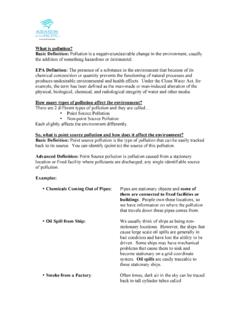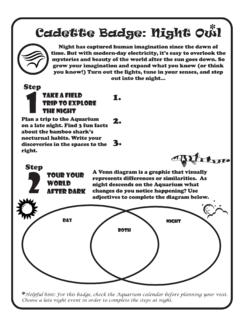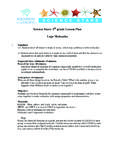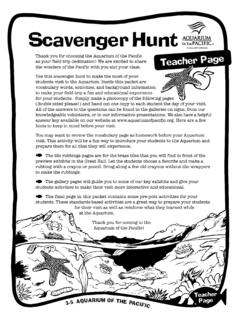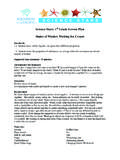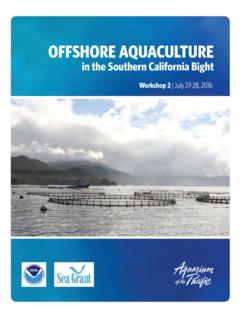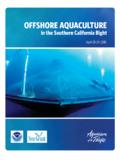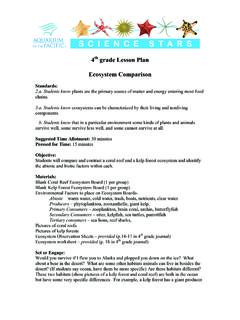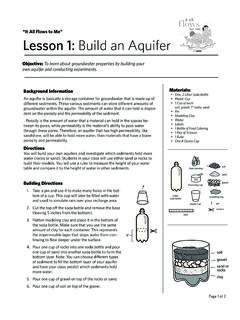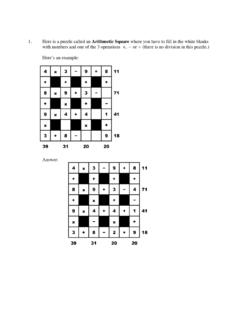Transcription of Science Stars: 3rd Grade Lesson Plan Renewable and ...
1 Science Stars: 3rd Grade Lesson Plan Renewable and Nonrenewable Energy Standards: Students know sources of stored energy take many forms, such as food, fuel, and batteries. c. Students know machines and living things convert stored energy to motion and heat. Suggested Time allotment: 50 minutes Pressed for time: 30 minutes Introduce Renewable and nonrenewable energy sources Hide fewer chips in the classroom Give each team only two search attempts Anticipatory set (engage): What is energy? What are some forms of energy we see around the room? Where do we get energy play? What about cars, TV s, and flashlights? Are there types of energy sources that could run out? Objective: Students will compare the availability of Renewable and nonrenewable energy sources, while illustrating the dilemma of searching for nonrenewable energy sources.
2 Introduce the concept of energy conservation at homes and in the community. Background: Fossil fuels are hydrocarbons, primarily coal and petroleum (fuel oil or natural gas), formed from the fossilized remains of dead plants and animals by exposure to heat and pressure in the Earth's crust over hundreds of millions of years. Fossil fuels are therefore in limited supply, yet make up a large portion of the energy source we rely on for gasoline, coal, and oil. In order to counter the diminished supply of fossil fuels, Renewable energy sources, such a wind, solar, nuclear, and hydrothermal sources of energy are being developed as more economically viable options. Burning fossil fuels is the largest source of carbon dioxide emissions. Carbon dioxide is one greenhouse gases that reduces the amount of radiant heat lost through the atmosphere and contributes to global warming.
3 The atmospheric concentration of CO2, a greenhouse gas, is increasing, raising concerns that solar heat will be trapped and the average surface temperature of the Earth will rise in response. Materials: 100 Poker chips 4 Containers per team labeled 1st, 2nd, 3rd, and 4th to be used for each search attempt Pinwheels (optional) Energy Sources Worksheet Vocabulary: Energy Fossil Fuel Renewable resource Nonrenewable resource Prep: Hide chips around the room prior to the Lesson . Some should be easily seen, while others can be more challenging to find . Be sure students do not touch the chips as they enter the room. Modeling 1: 1. Explain that students will be working in teams to search the room for energy sources in the form of poker chips. 2. Students will work in teams of 4 to find as many chips as they can in 30 seconds.
4 There will be 4 search attempts. 3. Model how to safely move around the room and gather chips in the appropriate container. 4. Model how to record the data from each round of hunting on the Energy Sources worksheet. 5. Ask student if they anticipate finding more chips in the 1st attempt or last attempt. Why? Guided Practice 1: 1. Provide 4 four rounds of 30 seconds for hunting. 2. Students record data on the Energy Sources Worksheet after each round. 3. Graph the results. What did they find ? Modeling 2: 1. Introduce the term nonrenewable resource. Discuss fossil fuels and gasoline as examples of energy sources that exist in limited quantity. 2. Hold up a pinwheel. Invite the students to determine what energy source is needed to make a pinwheel move. Introduce the term Renewable resource.
5 3. Brainstorm other sources of energy that can not be used up (solar, wind, wave, etc.) Guided Practice 2 (optional): 1. Allow students access to pinwheels as a way to experiment with wind energy. 2. Have students brainstorm ways to conserve energy in their homes. Check for understanding: When did you find the most chips? Did the number of available chips increase or decrease? What type of energy decreases overtime? What type of energy is constantly available? What things can we do to make nonrenewable energy last longer? Independent Practice (Learning extension): Build solar ovens to reinforce the concept of Renewable energy. What type of energy does your oven use to heat up? Is this nonrenewable or Renewable energy? What kind of energy do you think powers your oven at home?
6 Do you think that it is Renewable energy? Complete Energy Sources crossword puzzle. (answers will varybut students will see a decrease in supply(Either a bar graph or line graph is appropriate.)as the game continues)Energy from WavesWind EnergyGasolineFossil FuelsSolar EnergyRenewableNonrenewableEnergy Battery(answers vary but may include household items that run on fossil fuels.) ride a bike, turn off electronics, use wind or solar)(students may refer to nonrenewable energy sources and the need for conserving energy around the house)(answers vary but may includeWINDENERGYSOLARBATTERYGASLNRNONEW WBLEEBLEENE
